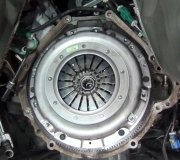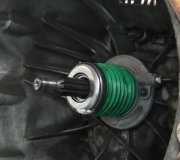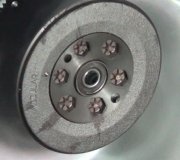Sorry that I am not a clutch specialist, but there are a couple of things to consider. First of all, some of these systems are sealed, and everything is replaced as an assembly. Second, to lose that much fluid, there is a leak, and that may be why it is not disengaging.
Also, keep in mind that once the master cylinder runs out of fluid, it sucks in air with the next pedal stroke, and since that air can compress, it is not going to effectively push the fluid to the leak. Unless all the fluid drained out, the only air in the system will be right on top. If you have a cap that can be removed, and you can add fluid, you can do my trick for never having to bleed at the wheels when replacing the brake master cylinder. Just add the fluid, replace the cap, then push the clutch pedal slowly to the floor.(Never push a brake pedal over half way to the floor as doing that can damage the master cylinder). Clutch pedals are commonly pushed all the way to the floor, so crud build-up is not a problem.
Release the clutch pedal quickly, then push it again slowly. Hold it down for a few seconds then release it again quickly. When you push the pedal slowly, the air bubbles have time to float back up. When you release the pedal quickly, the air goes into the reservoir with the fluid as it rushes back. Even if you do not get all the air out at first, it will continue working its way out over the next few days of driving.
SPONSORED LINKS
Monday, November 6th, 2017 AT 6:50 PM



